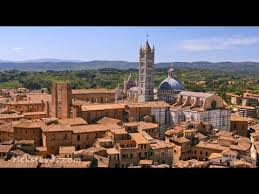“A man can be a Christian to the end of the world, for the simple reason that a man could have been an Atheist from the beginning of it. … But why our human lot is made any more hopeless because we know the names of the worms who eat [man], or the names of all the parts of him that they eat, is to a thoughtful mind somewhat difficult to discover.” – G. K. Chesterton
Cosmos is back on television again, in a reincarnated form hosted by Neil DeGrasse Tyson in place of the late Carl Sagan (host of the original 1980 series). The original Cosmos is remembered as a minor television classic, ushering in a new era of science programming and bringing the wonders of cosmology to the public in an accessible and enchanting way. The hopes for the new Cosmos seem equally high: the series has been heavily advertised and will be airing multiple nights each week, on multiple networks. The first episode even opened with a recorded message from President Obama.
Yet for all its promise, the first episode of Cosmos, which aired last Sunday, quickly disappointed, featuring an extended segment detailing the struggles of Giordano Bruno against the Renaissance authorities of Church and state that suppressed his “modern” ideas of an infinite universe filled with innumerable worlds – suppression that ultimately ended with Bruno’s being burned at the stake as a heretic.
Bruno has long been a favorite of anti-religious historians and is often dragged as a prop in current controversies. But the historical record shows that while Bruno may have held some ideas that later turned out to be scientifically prescient, he held them for bizarre and occult reasons; Bruno’s demise was ultimately the result of his obstinate and bizarre cultish teachings, not his advance of scientific inquiry.
Appropriately, the Bruno segments were animated, unconsciously reflecting the cartoonish version of history presented in the show more generally. Tyson adds a caveat that Bruno’s ideas were not scientific or evidence-based, a tremendous understatement. Even Galileo, whose story would have presented a far more respectable protagonist for the Cosmos agenda, found Bruno to be a crackpot. At best, Bruno could arguably be advanced as a martyr for free, if crazy, speech; he is most certainly not, however, a martyr for science.
The Bruno myth, however, does set up the basic message of Cosmos: the universe is a fascinating and beautiful place, and science is the best human endeavor to reveal it. It is science, not other “dogmatic” institutions, that reveal to man who he really is. In particular, Sagan is famous for his reminder to audiences that, “You are made of starstuff,” or in other renditions, “stardust.” He refers to the remarkable discovery that the heavier elements, including the carbon that makes up much of our bodies, was made in the fusion processes that power stars and energetic supernovae. It is, in fact, a fascinating link between our material selves and the processes that formed the cosmos in the aeons before.
Yet, perhaps to the chagrin of both some creationists and the anti-religious, man’s continuity with the material world has been emphasized since the writing of the first lines of Genesis. Recently, Catholics emphasized this material connection with a well known sacramental, blessed ashes on the forehead, and words that are reminiscent of Sagan’s, but preceded him by millennia: “Remember, man, you are dust…”
But which of these reminders is right: Cosmos’ presentation of the grandeur of man’s material origin in the stars, or Ash Wednesday’s call to humility in its reminder of man’s natural origin and destiny as dust and ashes? Both, in their way. As Walker Percy noted in his comments on the original Cosmos:
One is not offended by Sagan. There is too little malice and too much ignorance. It is enough to take pleasure in the pleasant style, the knack for popularizing science, and the beautiful pictures of Saturn and the Ring Nebula. Indeed, more often than not, I found myself on Sagan’s side, especially in his admiration for science and the scientific method, which is what he says it is – a noble, elegant, and self-correcting method of attaining a kind of truth.
As Cosmos portrays, the stars, like all of Creation, are radiant with goodness and beauty, as honest scientists recognize. Yet science alone is incapable of moving beyond recognizing the radiance of nature to its source. Creation transmits beauty, but it is not the source of it. Creation points towards a Creator, and man is made to know not only the goodness of what has been made, but more importantly the goodness of the Maker. This latter can only be known through a repentant humility.
Sagan and Tyson are right: the beauty of the natural cosmos is compelling, and science is the special way of uncovering one majestic dimension of that order and beauty. One hopes that the future episodes of Cosmos will recover this message. But if science can aid in uncovering a wonderful universe, it is incapable of accounting for why such beauty and wonder are, in fact, ultimately meaningful.
To paraphrase Chesterton, knowing all the parts of man that return to dust, or the names of all the stars that formed the dust that made him, means little if man is nothing more than just one more clump of matter. Whether being made of the dust of stars has any significance at all, as Cosmos suggests that it does, depends on whether we can recognize in those stars the echoes of their Maker, and ours.















